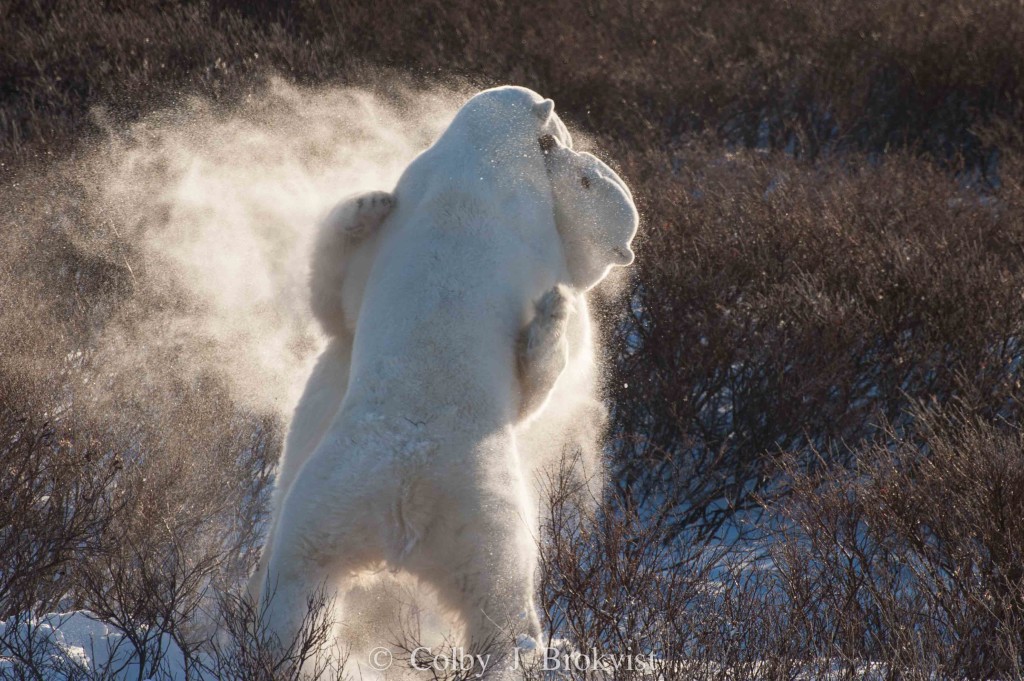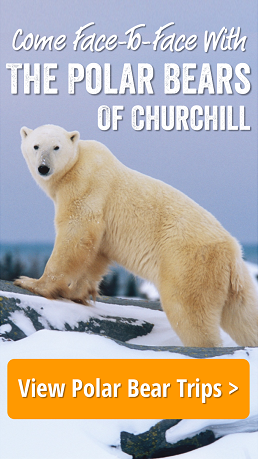by Steve Selden | Dec 23, 2014 | Conservation
Polar bears congregate every year around Churchill, Manitoba to await ice formation in the western and southern Hudson Bay. By early to mid November, polar bears are omnipresent in the Churchill Wildlife Management Area with travelers on polar rovers seeing more than 50 polar bears in a single excursion to the tundra.

Polar bear looking at the polar rover. Photo: Colby Brokvist
There are a few major factors for the bears anticipating the freeze-up in the Churchill region.First and foremost is simple topography relating to the location of the town of Churchill and the jutting land that extends into the bay known as Cape Churchill. As you can see by the map the shelf is quite evident.

While this shelf extension is not all that crucial in itself as a major congregating hot-spot, the contributing factors qualify it as such. Counter-clockwise sea currents cause ice formation to get hung up there. The stalling affect on the flow of water coupled with fresh water flow from the Churchill and Nelson Rivers, to name two of the biggest in the area, create the perfect formula for ice formation here. Since fresh water freezes faster than salt water, the ice will build early off the coast and then combine with the northern ice formed in the colder regions. That pack ice is pushed in by the currents and south winds. All this make for a “perfect storm” of ice formation at the most accessible place in the sub-Arctic.

Three polar bears explore the coastline anticipating the freeze-up. Karen Walker photo.
Of course, there is another reason polar bears like Churchill. Human population. A community of humans brings all the side benefits for animals…and in this case hungry polar bears trying to survive to the next seal-hunting season on fat reserves. The aromas and food by-products associated with human life attract every opportunistic species around. Around Churchill, top of the list are the polar bears. Before the old dump was closed down some years ago, polar bears would forage there all day and became a zoo-like attraction to travelers and locals alike. With the majority of that facility closed down, polar bear activity in town escalated over the years. The Polar Bear Alert program has become quite active in attempts to keep up with the burgeoning polar bear appearances in the town.
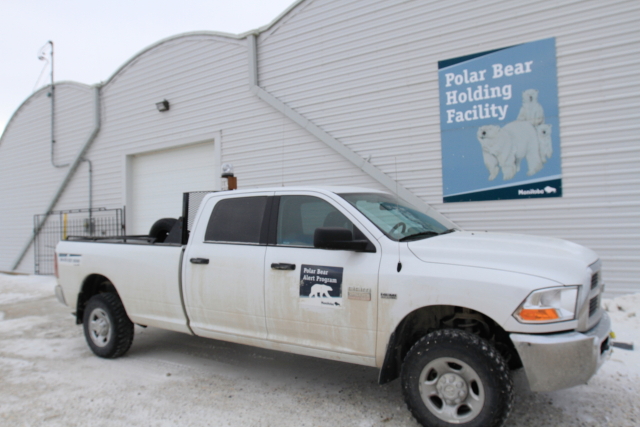
Polar bear holding compound in Churchill.
Global warming indications have also caused polar bears to appear on land earlier in the summer months. With sea ice coverage decreasing recently in the Hudson Bay, polar bears are being forced to come on land and seek alternative food sources. I can say from first-hand experience that polar bear sightings in Churchill have increased over the past 15 years. Guiding summer beluga whale trips for over a decade has allowed me to witness the firsthand increase in bear numbers. Bears have also become more successful at seal hunting in the shallow tidal coastal areas around the Churchill region.

Polar bear enjoying the success of a seal kill. Photo Paul Brown
Overall, the changes in polar bear numbers year-round have spurred Manitoba Conservation officers to adjust their strategy regarding bear management in Churchill. The feeling is this will continue to be readjusted even more over the coming years.
.
by Steve Selden | Dec 19, 2014 | Conservation
There are many ways to see the natural wonders of Churchill. The diversity of the region and the various modes of transportation, both land and sea based, afford some truly adventurous methods to see it all. From polar bears to beluga whales to all the other supporting animals in this Arctic cast of beautiful creatures, one can come to Churchill with Natural Habitat Adventures and see as much as you can!

Polar bear taking roll call at a polar rover.
The polar rover is built from the wheels up by our local operator. It’s an amazing vehicle in its own right though when you see polar bears from the back open – air deck you will really see how magical both machine and bear are.
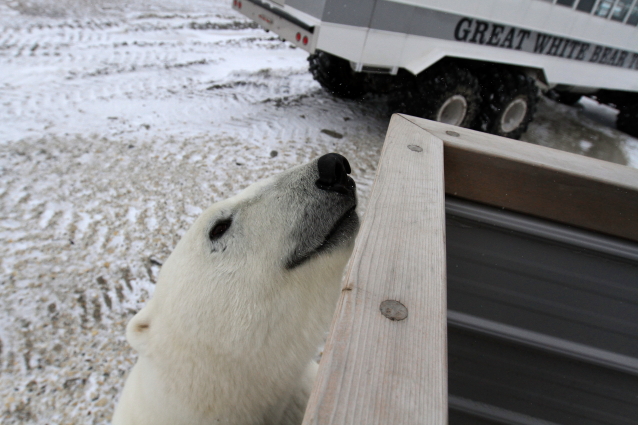
Polar bear looking for a free lunch. Brad Josephs photo.
You can’t get any closer to a polar bear than this in Churchill, Manitoba.

Hudson Bay helicopter lifting off with a cargo of polar bears. Sean Beckett photo.
Hudson Bay Helicopters transports travelers to see the incredible landscape and wildlife below on the tundra and ice. They also play an integral part in wildlife management in the area by transporting bears and biologists to various destinations.
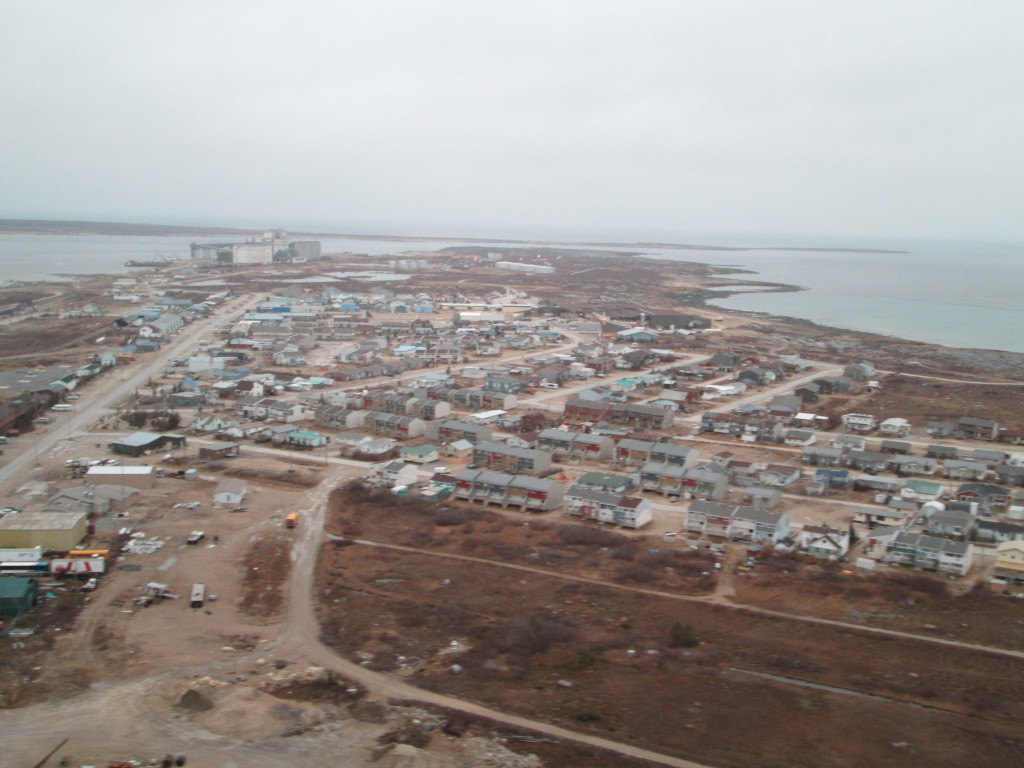
A birds eye view from the helicopter above Churchill. Karen walker photo.
Helicopters offer a perspective of the open space and town of Churchill that is eye opening.
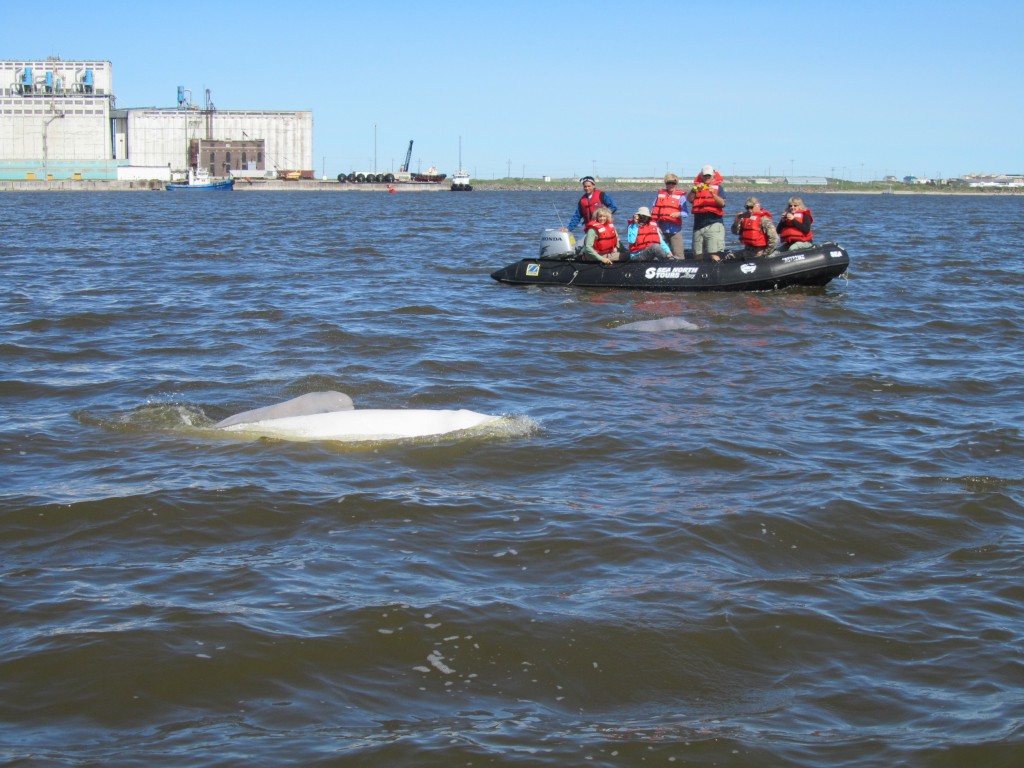
Natural Habitat travelers beluga watching in the Churchill River.
Zodiacs on the Churchill River offer a surface view of beluga whales you cannot get from a bigger vessel where you’re looking down on the whales.
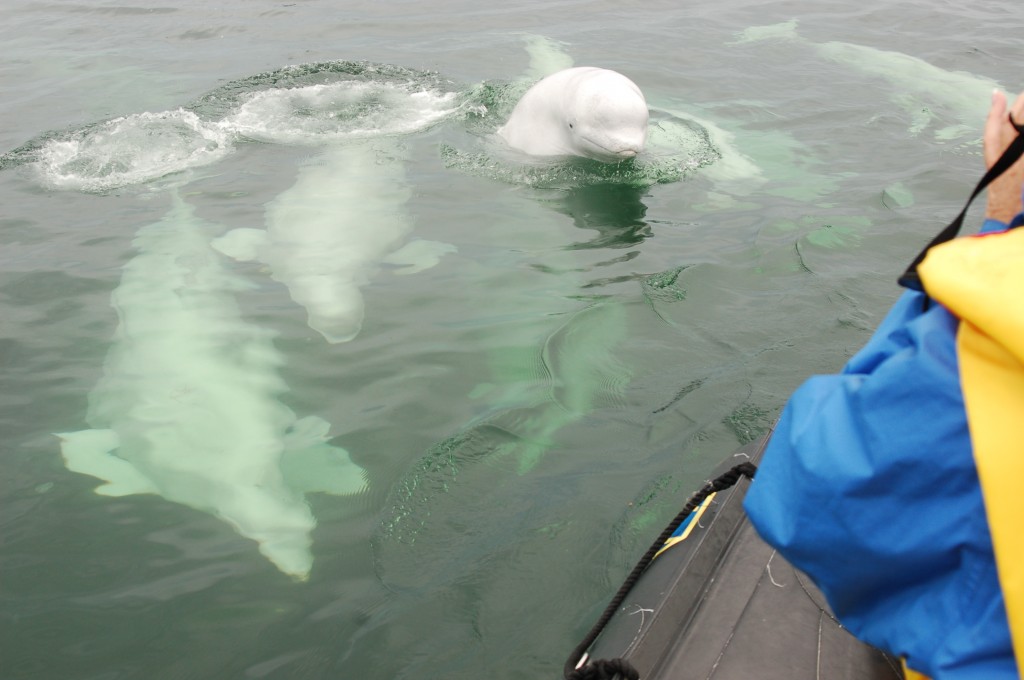
A beluga whale popping out from the Churchill River near the mouth where visibility is amazing. Steve Selden photo.
My favorite photo from my guiding years in Churchill. The thrill of seeing a beluga so close that the spray from his blowhole hits you in the face..
Whatever mode of wildlife adventure you experience you will have memories for a lifetime!
by Steve Selden | Dec 12, 2014 | Conservation
Let’s face it, “cold” is what the Arctic does best….especially to those living below this amazing region of our planet Earth. So, other than the hearty mammals, particularly the mighty polar bear and humans, very few birds overwinter at high latitudes. Less than 10% of all birds that venture to Arctic and sub-Arctic regions unpack their bags and set up a permanent home there.
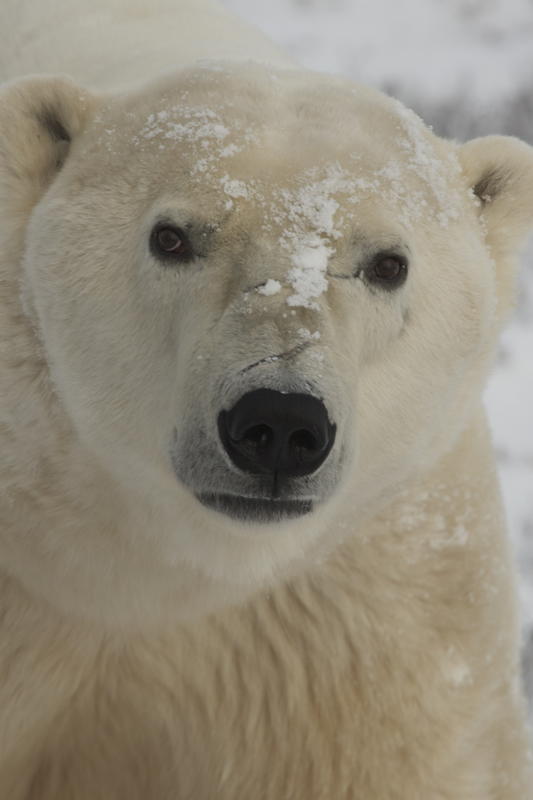
Polar bears are the king of the Arctic. Photo: Paul Brown
Birds that do either have some hearty DNA or have developed some unique ways to cope with cold temperatures that can dip to -55 Celsius. Most of you know the raven can subsist just about anywhere on the planet and the intelligence and intuitiveness of this creature has been well documented. He is truly the sentinel of true survival…especially as his shining black defiantly glares out against the snowy north.
Rock and willow ptarmigan can be seen in Churchill as the fall arrives and throughout the winter, changing to their winter’s best camouflage white. Ivory and the illusive and highly prized Ross’s gull also stay put for the winter. I’ve spotted the Ross three times in over a decade of guiding Natural Habitat Churchill summer trip. All three times the sightings were facilitated by Churchill birding master and legend Bonnie Chartier when we worked together up north.

The Common and hoary redpoll, Brunnich’s Guillemot, Little Auk and Black Guillemot also inhabit the Arctic full-time. Snow buntings and gray jays are quite friendly species that call Churchill home all year. Higher up in Greenland the birds tend to shelter in utility tunnels known as utilidors.
Boreal chickadees and occasionally boreal owls and great horned owls inhabit the boreal forest. And, the mighty gyrfalcon, the fourth fastest bird on the planet…er off the planet, can be seen sporadically hunting or soaring from point to point. I have seen this bird dart across the Churchill tundra and even through town.

Gyrfalcon on the tundra in Churchill,MB.Paul Brown photo.
The most intuitive behavior exhibited for warmth and survival is how ptarmigan and common hoary redpolls take shelter in snowdrifts and endure the frigid cold by utilizing the snow as insulation. Ptarmigan and Snowy Owls grow leg and feet feathers to keep them warm throughout the winter months. They also change plumage from dark to white in order to stay camouflaged and safe from predators.
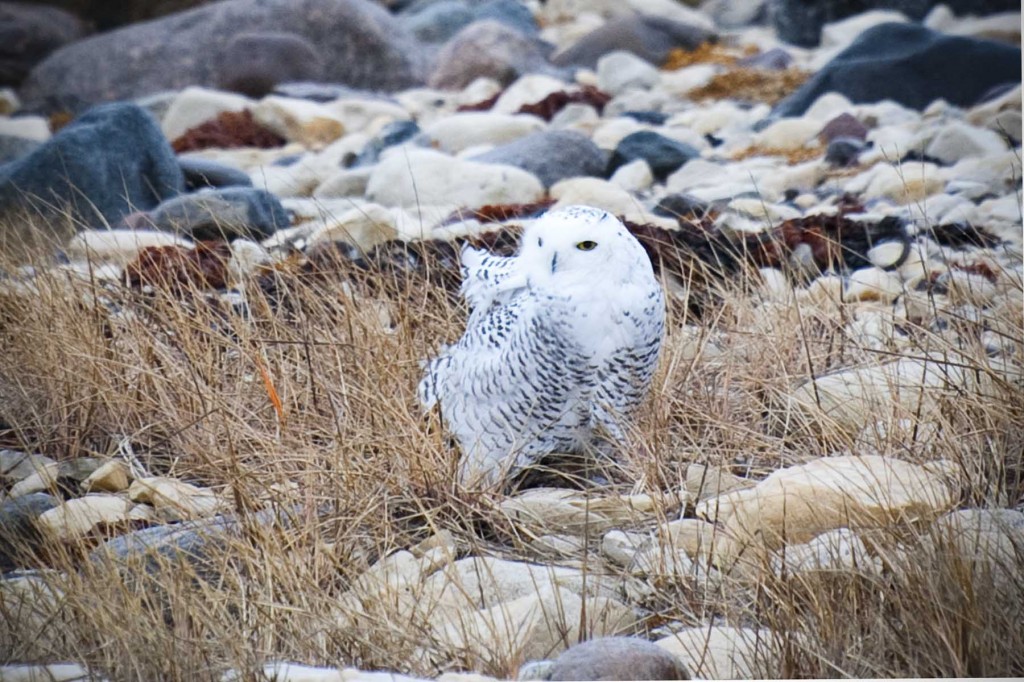
Snowy owl greets virgin travelers to the north. Colby Brokvist photo.
The summer months are reminiscent to a beach-side resort with the bird population ballooning by more than 200 additional migrant species arriving in early spring. These are birds that cannot survive the harsh conditions of winter in the far north though return each year to take advantage of the bounty of food sources thriving in the Arctic summer. The most incredible journey is clearly that of the Arctic tern…making the pole to pole round trip of nearly 45,000 miles.

Arctic tern hovering above the nesting grounds. Rhonda Reid photo.
Many of these species arrive early and set up nests for the short but productive breeding season. With snow cover still prevalent, these hearty nurturing parents live off their stored fat reserves for energy. The majority of the Arctic and sub-Arctic species are wetland feeders such as various ducks, swans and geese. Waders and shorebirds also scour the marshes and shoreline plucking all the organisms they can from the Earth.
by Steve Selden | Nov 20, 2014 | Conservation
Polar bear season 2014 has come to a close in the Churchill Wildlife Management Area as well as the Churchill town vicinity. Polar bears in the area have headed out on the Hudson Bay ice pack in search of seals to forage. Although the last travelers to Churchill have had sparse bear sightings at best, the situation for the bears is ideal.
Overall this season has been extraordinary when it comes to the health of the polar bears and the number of sows and cubs in the area. The weather has been very fitting for the bears and the early freeze-up has enabled the polar bears to get out on the ice and start building their fat reserves back up.

Polar bear taking roll call at a polar rover.
Here’s the link to the Conservation numbers of polar bear occurrences, fly-outs, in the compound, and releases throughout the season.
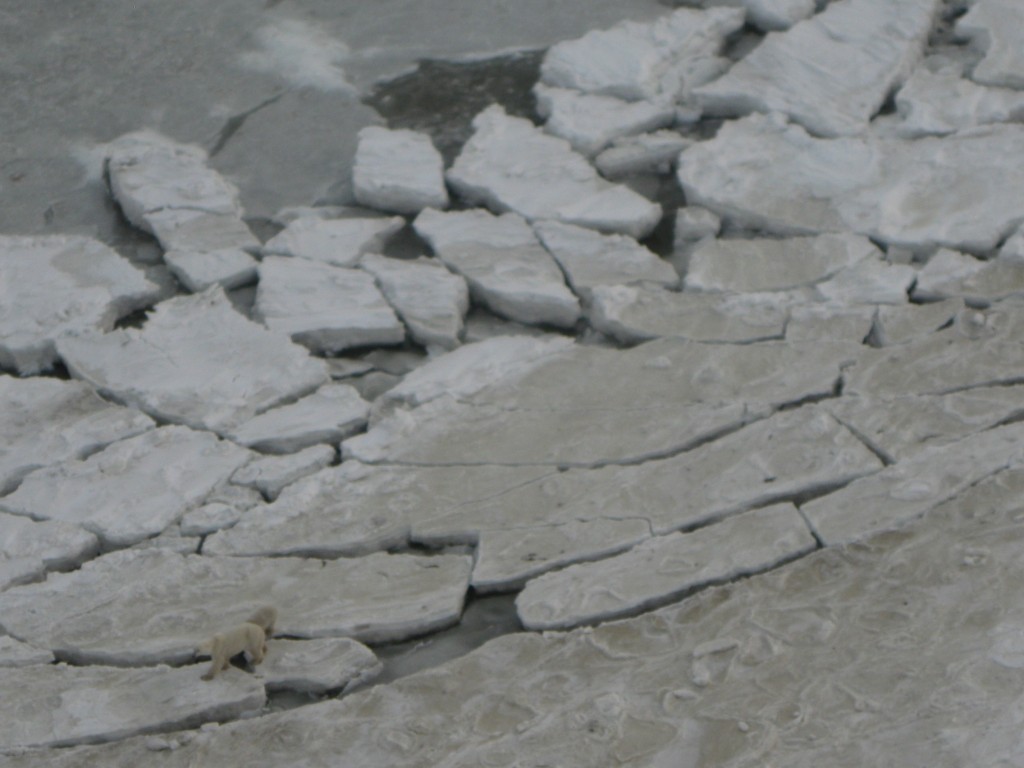
Hudson Bay ice floes collide and pack in tight. Karen Walker photo.
Here’s what a note on the Conservation Manitoba door read: “Bears were observed passing by Churchill on the ice on November 12th. Started ice release on November 14th. Completed ice release on November 16th. Most bears are now on the ice on Hudson Bay.”
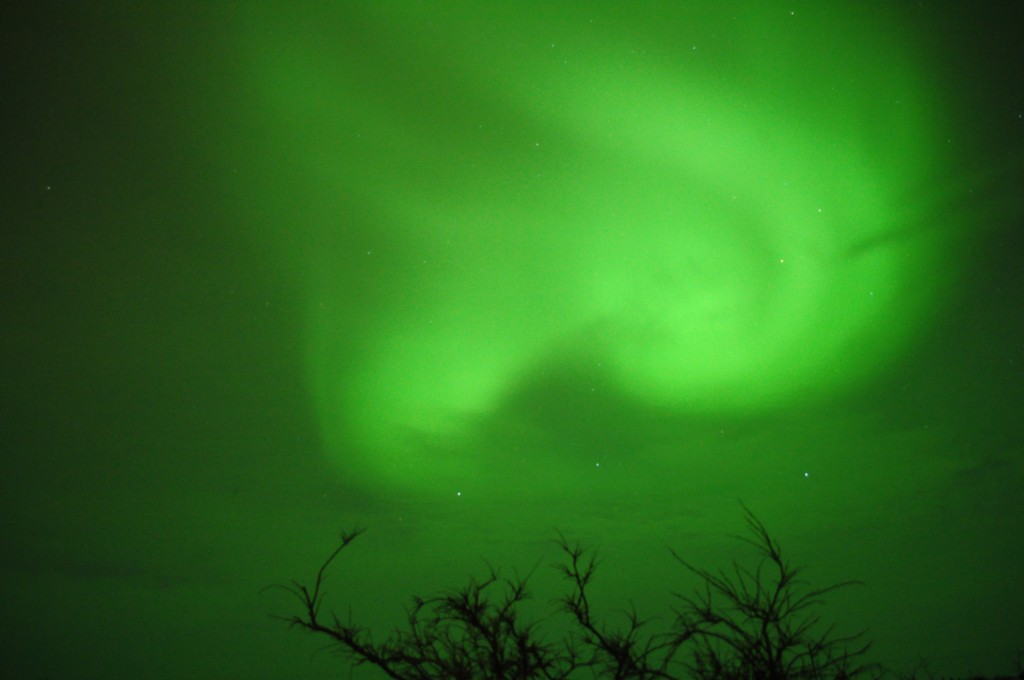
Jeremy Pearson photo.
A truly memorable season is over ….looking forward to this winters’ aurora trips!
For information on this winter’s upcoming aurora borealis trips go to nathab.com!
by Steve Selden | Nov 13, 2014 | Conservation
Churchill, Manitoba is home to the king of the Arctic, polar bears, this time of year for many reasons though weather surely tops the list. You see, polar bears actually love the cold, snowy environment that slowly melds the surrounding tundra into the waters of the Hudson Bay forming a seemingly continuous icy landscape. When this happens, Ursus Maritimus walks out onto the bay and disappears into the white in search of sustenance for survival.
The two-month long period in between is intense and somewhat unpredictable thus the reason for so many travelers making the annual pilgrimage to Churchill, Manitoba.
Here are some recent photographs from Churchill submitted by Natural Habitat guides from their daily treks to the Churchill Wildlife Management Area…a polar bear waiting area for true winter in the north.

Polar bear dance…sparring. Brad Josephs photo.

A sun dog casting its’ rays on an inukshuk. Brad Josephs photo.

Natural Habitat travelers photographing a polar bear from their polar rover. Karen Walker photo.

A polar bear sow with its’ cub of the year. Sean Beckett photo.

Natural Habitat polar bear guide Moire Le Patourel with polar bear tracks. Eric Rock photo.
Come see the land of the polar bear with Natural Habitat Adventures! Visit nathab.com today.
by Steve Selden | Oct 27, 2014 | Conservation
Karen Walker’s Natural Habitat travelers arrived into Churchill on a VERY mild day this past week. The temperatures have been in the 30’s, with very little wind. While making a traditional orientation stop at the Inukshuk, the smell of sea kelp was persistent without the breezes off the Hudson Bay. The group ventured up to Cape Merry and comfortably spent a half hour at the battery enjoying the panoramic views and interesting natural history from Ranger Heather.

Exploring the precambrian sheild in Churchill. Karen Walker photo.
Later, as the group headed out on the launch road, they spotted an Arctic hare tucked into some spruce branches right next to the road. “We went out to the lodge and spotted three white slivers of bears off in the willow bushes. Two of them sparred in the willows, then moved toward the lodge” stated Karen. “One big guy sat right under the lodge windows looking up at the lodge, while the other two sparred by the propane tanks. We were parked at the end of the lodge, splitting half of the rover looking into the back of the lodge and half in the front. Once the polar bears settled down in the willows, dinner was served and the polar rover headed back to launch.

Frosty white polar bear on the tundra. Brad Josephs photo.
The following day five helicopters with 15 people lifted off in search of a polar bear den. Overcast with a very light wind….the contingent flew over the fort and up the Churchill River. A couple of the helis spotted harbor seals on the rocks just below the weir a short ways up the river. “Further up river we spotted some moose. Some helicopter passengers saw sows with calves, some spotted bulls” reported Karen. The group landed at Deer River to look at an abandoned bear den. Many of the travelers went inside and snapped a photo. The surrounding tundra was spongy and covered with caribou moss (lichen), crowberries, lowbush cranberries and the fragrant Labrador tea and even some red cranberries above the den. “I love the smell of the Labrador tea as you walk across the tundra.” stated karen. The larch/tamarack trees were losing their last needles. These trees are unique in that they are one of the only coniferous trees to lose their needles in the winter.

A birds eye view from the helicopter above Churchill. Karen walker photo.
The helicopters set off again flying across the wide open space, over the ponds and wetlands across Wapusk National Park. “We spotted many more moose in the forest -moms and calves, bulls, and bulls with cows nearby.” On the return journey back to Churchill the helicopters flew along the coast to look for polar bears. “We spotted innumerable bears along the coast, walking, standing, and laying in the kelp. In one group there were seven bears right near each other, and 15 bears within our view. We also spotted a couple of moms with cubs. We flew over the CWMA and the finally the Ithaca shipwreck and into Churchill.” What a trip!
As the group landed and entered the Hudson Bay Helicopter base office, Karen spotted a Conservation officer. She sensed that something might be happening shortly out at the Polar Bear Compound and she was right. The group hurried by shuttle out to the facility to see a mom with two, two-year-old cubs lifted by net up the coast of Hudson Bay. “It was pretty exciting for the guests that had just ridden in that helicopter to see it used for the bear lift” offered Karen.

Conservation officers prepare an animal for a bear lift. Karen walker photo.
The group headed over to Kelly Turcotte’s Churchill River Mushing for an afternoon of dog mushing. Kelly provided interesting information on the dog hierarchy and expenses to feed dogs up in the north, then the guests went out to meet the dogs. It was “warm” out, so there was a lot of mud in the dog yard and many guests came back with muddy foot prints on their Natural Habitat parkas. After the bumpy and fun ride on the cart-sleds Kelly spoke about a bear that was nosing around his dog yard earlier this season. Conservation officers tranquilized the bear and took him away to the compound.
On the way back into town, the group stopped at the Dene Village monument and learned about the struggles of the Dene people through their government forced relocation. Winding along the RX Road, the travelers stopped to see the Canadian Eskimo Dogs that various owners hold in their kennel yards and then made a final stop at the Town of Churchill sign for a group photo. All in all an amazing trip so far in Churchill!

















